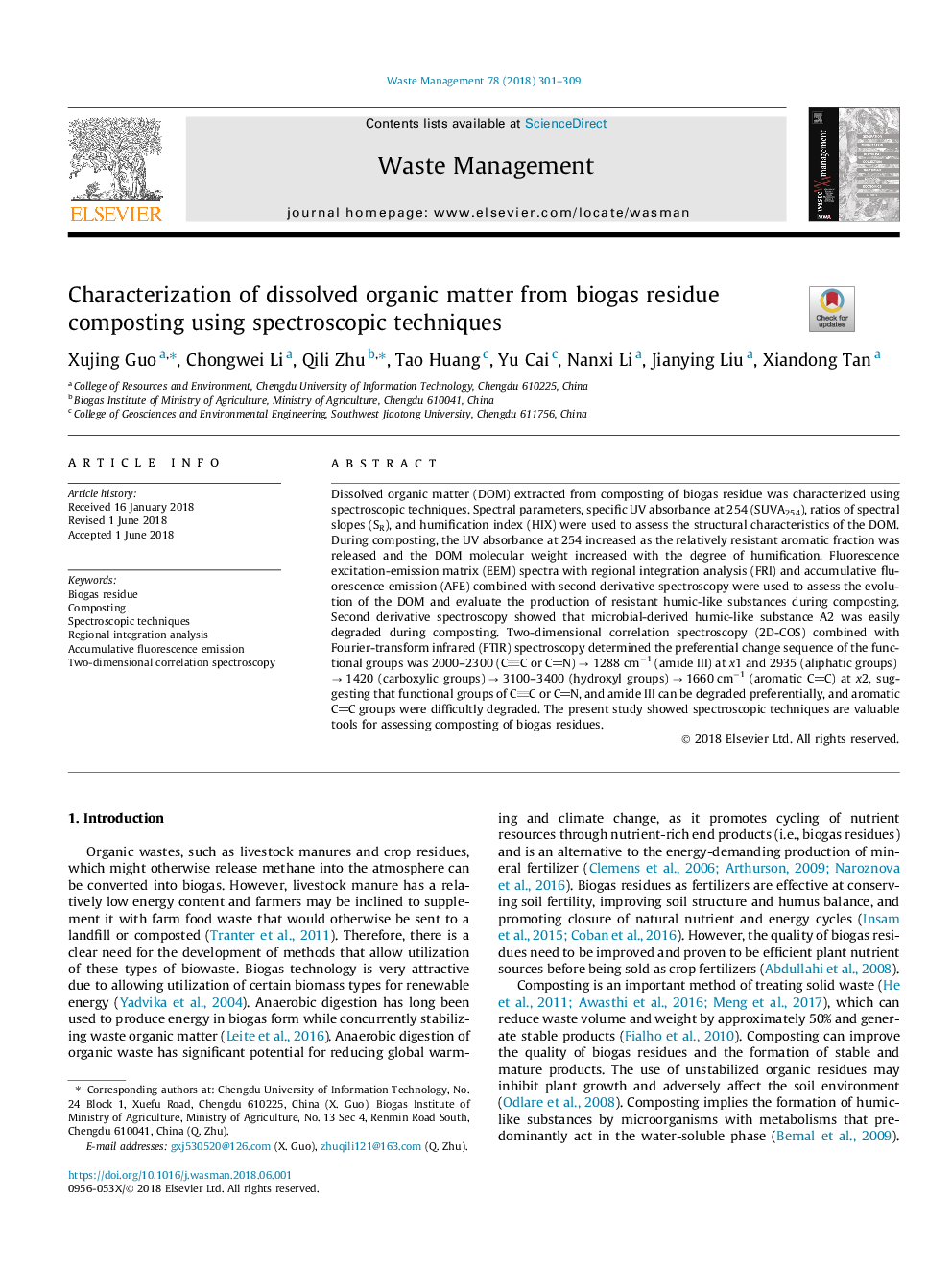| Article ID | Journal | Published Year | Pages | File Type |
|---|---|---|---|---|
| 8869442 | Waste Management | 2018 | 9 Pages |
Abstract
Dissolved organic matter (DOM) extracted from composting of biogas residue was characterized using spectroscopic techniques. Spectral parameters, specific UV absorbance at 254 (SUVA254), ratios of spectral slopes (SR), and humification index (HIX) were used to assess the structural characteristics of the DOM. During composting, the UV absorbance at 254 increased as the relatively resistant aromatic fraction was released and the DOM molecular weight increased with the degree of humification. Fluorescence excitation-emission matrix (EEM) spectra with regional integration analysis (FRI) and accumulative fluorescence emission (AFE) combined with second derivative spectroscopy were used to assess the evolution of the DOM and evaluate the production of resistant humic-like substances during composting. Second derivative spectroscopy showed that microbial-derived humic-like substance A2 was easily degraded during composting. Two-dimensional correlation spectroscopy (2D-COS) combined with Fourier-transform infrared (FTIR) spectroscopy determined the preferential change sequence of the functional groups was 2000-2300 (CC or CN)â¯ââ¯1288â¯cmâ1 (amide III) at x1 and 2935 (aliphatic groups)â¯ââ¯1420 (carboxylic groups)â¯ââ¯3100-3400 (hydroxyl groups)â¯ââ¯1660â¯cmâ1 (aromatic CC) at x2, suggesting that functional groups of CC or CN, and amide III can be degraded preferentially, and aromatic CC groups were difficultly degraded. The present study showed spectroscopic techniques are valuable tools for assessing composting of biogas residues.
Related Topics
Physical Sciences and Engineering
Earth and Planetary Sciences
Geotechnical Engineering and Engineering Geology
Authors
Xujing Guo, Chongwei Li, Qili Zhu, Tao Huang, Yu Cai, Nanxi Li, Jianying Liu, Xiandong Tan,
